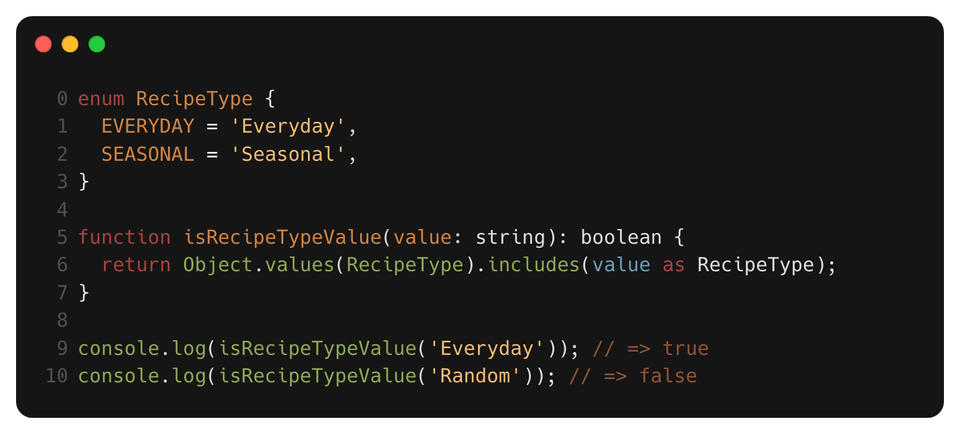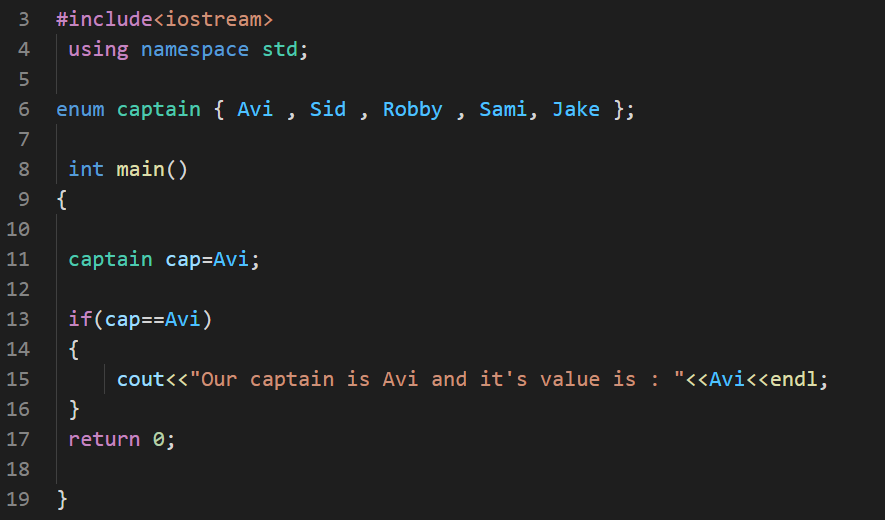Introduction to TypeScript Enums
TypeScript, a powerful superset of JavaScript, has become a cornerstone of modern web development for its ability to add static typing to large-scale applications. While many of TypeScript’s features, like interfaces and type aliases, are erased during compilation to produce clean JavaScript, some features leave a runtime footprint. TypeScript Enums are a prime example of this, providing a unique bridge between compile-time safety and runtime functionality. They allow developers to define a set of named constants, making code more readable, maintainable, and less prone to errors from “magic values”—arbitrary strings or numbers scattered throughout a codebase.
Unlike simple type annotations, enums are compiled into JavaScript objects, making their values accessible at runtime. This characteristic makes them incredibly versatile, useful for everything from managing application state in a TypeScript React or Angular project to defining command sets in a TypeScript Node.js backend. This article provides a comprehensive technical guide to TypeScript Enums, exploring their core concepts, practical applications with JavaScript, advanced patterns, and best practices. We’ll dive into how they work under the hood, their impact on performance, and when to use powerful alternatives like string literal union types.
The Core Concepts of TypeScript Enums
At its heart, an enum is a way to organize a collection of related values. It prevents bugs by ensuring that a variable can only hold one of a predefined set of values, providing both documentation and validation in one feature.
Numeric Enums
The most common type of enum is the numeric enum. By default, members are assigned incrementing numbers, starting from 0. This is useful for representing states or statuses where the underlying numeric value is less important than the descriptive name.
Consider a logging system where you want to define different levels of severity.
// Defining a numeric enum for log levels
enum LogLevel {
DEBUG, // 0
INFO, // 1
WARN, // 2
ERROR, // 3
FATAL // 4
}
function logMessage(level: LogLevel, message: string) {
if (level >= LogLevel.WARN) {
console.warn(`[${LogLevel[level]}]: ${message}`);
} else {
console.log(`[${LogLevel[level]}]: ${message}`);
}
}
logMessage(LogLevel.INFO, "User successfully logged in.");
logMessage(LogLevel.ERROR, "Failed to connect to the database.");When this TypeScript code is compiled, it doesn’t disappear. The TypeScript Compiler generates a JavaScript object to support this functionality at runtime. This generated code includes a reverse mapping, allowing you to get the string name from the numeric value.
"use strict";
// Generated JavaScript for the LogLevel enum
var LogLevel;
(function (LogLevel) {
LogLevel[LogLevel["DEBUG"] = 0] = "DEBUG";
LogLevel[LogLevel["INFO"] = 1] = "INFO";
LogLevel[LogLevel["WARN"] = 2] = "WARN";
LogLevel[LogLevel["ERROR"] = 3] = "ERROR";
LogLevel[LogLevel["FATAL"] = 4] = "FATAL";
})(LogLevel || (LogLevel = {}));
function logMessage(level, message) {
if (level >= LogLevel.WARN) {
console.warn(`[${LogLevel[level]}]: ${message}`);
} else {
console.log(`[${LogLevel[level]}]: ${message}`);
}
}
logMessage(LogLevel.INFO, "User successfully logged in.");
logMessage(LogLevel.ERROR, "Failed to connect to the database.");String Enums
String enums are a simpler and often safer alternative. Each member must be initialized with a string literal. They are less prone to error than numeric enums because the value itself is readable and meaningful, which is invaluable for debugging.
Let’s model the status of an API request using a string enum.

enum RequestStatus {
Idle = 'IDLE',
Pending = 'PENDING',
Success = 'SUCCESS',
Error = 'ERROR',
}
let currentStatus: RequestStatus = RequestStatus.Idle;
console.log(`Initial status: ${currentStatus}`); // Initial status: IDLE
// Later in the application
currentStatus = RequestStatus.Pending;
console.log(`Updated status: ${currentStatus}`); // Updated status: PENDINGThe generated JavaScript for a string enum is much simpler than for a numeric one. It’s a straightforward object mapping keys to string values, with no reverse mapping created.
"use strict";
var RequestStatus;
(function (RequestStatus) {
RequestStatus["Idle"] = "IDLE";
RequestStatus["Pending"] = "PENDING";
RequestStatus["Success"] = "SUCCESS";
RequestStatus["Error"] = "ERROR";
})(RequestStatus || (RequestStatus = {}));
let currentStatus = RequestStatus.Idle;
console.log(`Initial status: ${currentStatus}`);
currentStatus = RequestStatus.Pending;
console.log(`Updated status: ${currentStatus}`);Practical Implementations with JavaScript Interoperability
Because enums exist at runtime, they are perfect for interacting with JavaScript libraries, APIs, and the DOM. They provide a type-safe layer over string or number-based systems.
Handling API Responses in a TypeScript Node.js App
In a backend application built with TypeScript and Express or NestJS, enums can standardize HTTP status codes, making the codebase cleaner and more predictable.
import express, { Request, Response } from 'express';
// Enum for standard HTTP status codes
enum HttpStatus {
OK = 200,
CREATED = 201,
BAD_REQUEST = 400,
NOT_FOUND = 404,
INTERNAL_SERVER_ERROR = 500,
}
const app = express();
app.get('/users/:id', (req: Request, res: Response) => {
const userId = parseInt(req.params.id, 10);
// A mock user database
const users = {
1: { name: 'Alice' },
2: { name: 'Bob' },
};
if (isNaN(userId)) {
return res.status(HttpStatus.BAD_REQUEST).json({ error: 'Invalid user ID' });
}
const user = users[userId as keyof typeof users];
if (user) {
res.status(HttpStatus.OK).json(user);
} else {
res.status(HttpStatus.NOT_FOUND).json({ error: 'User not found' });
}
});
app.listen(3000, () => console.log('Server running on port 3000'));Managing Asynchronous State with Async/Await
When dealing with asynchronous operations, such as fetching data from an API, enums are excellent for tracking the state of the operation. This is a common pattern in TypeScript React or Vue applications.
// Re-using our RequestStatus enum
enum RequestStatus {
Idle = 'IDLE',
Pending = 'PENDING',
Success = 'SUCCESS',
Error = 'ERROR',
}
interface User {
id: number;
name: string;
email: string;
}
// A simple state manager
const state = {
status: RequestStatus.Idle,
data: null as User | null,
error: null as string | null,
};
async function fetchUser(userId: number): Promise {
console.log('Starting user fetch...');
state.status = RequestStatus.Pending;
try {
const response = await fetch(`https://jsonplaceholder.typicode.com/users/${userId}`);
if (!response.ok) {
throw new Error(`API Error: ${response.statusText}`);
}
const user: User = await response.json();
state.data = user;
state.status = RequestStatus.Success;
console.log('Fetch successful:', state);
} catch (err) {
state.error = (err as Error).message;
state.status = RequestStatus.Error;
console.error('Fetch failed:', state);
}
}
// Execute the async function
fetchUser(1); Interacting with the DOM
Enums can also be used to manage UI states in the browser. For example, you can define a set of themes and create a function to apply the corresponding CSS class to the document body.
enum Theme {
Light = 'theme-light',
Dark = 'theme-dark',
HighContrast = 'theme-high-contrast',
}
function applyTheme(theme: Theme): void {
// Clear existing theme classes
document.body.classList.remove(Theme.Light, Theme.Dark, Theme.HighContrast);
// Add the new theme class
document.body.classList.add(theme);
console.log(`Theme changed to: ${theme}`);
}
// Example usage: could be triggered by a button click
// Assuming buttons with IDs 'light-btn', 'dark-btn' exist
document.getElementById('light-btn')?.addEventListener('click', () => applyTheme(Theme.Light));
document.getElementById('dark-btn')?.addEventListener('click', () => applyTheme(Theme.Dark));
// Set a default theme on load
applyTheme(Theme.Light);Advanced Techniques and Performance Considerations
Beyond the basics, TypeScript offers more advanced enum features that come with their own trade-offs, particularly regarding performance and bundle size.
Reverse Mappings in Numeric Enums
As shown in the first generated JavaScript example, numeric enums have a special feature: reverse mapping. This allows you to get the string name of an enum member from its numeric value. This can be useful for debugging or logging.

enum UserRole {
GUEST, // 0
MEMBER, // 1
ADMIN, // 2
}
const roleValue = 1;
const roleName = UserRole[roleValue]; // "MEMBER"
console.log(`The name for role value ${roleValue} is ${roleName}.`);
// Note: This does NOT work for string enums.
// enum StringRole { GUEST = "GUEST" }
// console.log(StringRole["GUEST"]); // This works, returns "GUEST"
// console.log(StringRole[StringRole.GUEST]); // This does NOT work for reverse mapping.While powerful, this feature adds to the size of the generated JavaScript code. If you don’t need this functionality, string enums or `const` enums are better choices.
`const` Enums for Zero-Cost Abstraction
For performance-critical applications, the runtime overhead of a standard enum might be undesirable. This is where `const` enums shine. A `const` enum is a compile-time-only construct. During transpilation, TypeScript replaces every reference to an enum member with its actual value (inlining). The enum object itself is completely erased from the final JavaScript bundle.
const enum Direction {
Up,
Down,
Left,
Right,
}
let myDirection = Direction.Up;
console.log(myDirection);The generated JavaScript is incredibly lean:
"use strict";
let myDirection = 0; /* Direction.Up */
console.log(myDirection);The trade-off: Because `const` enums are erased, you lose all runtime capabilities, including reverse mappings and the ability to iterate over enum keys. They are purely for compile-time safety and readability.
Best Practices, Pitfalls, and Alternatives
Choosing the right tool is key to writing effective TypeScript. While enums are powerful, they aren’t always the best solution.
Best Practices for Using Enums
- Prefer String Enums: For most use cases, string enums are superior. They are more descriptive, provide better debugging output, and avoid the potential confusion of numeric values and reverse mappings.
- Use `const` Enums for Performance: When working on performance-sensitive code or libraries where bundle size is critical, use `const` enums to get the benefits of type safety without any runtime cost.
- Maintain PascalCase Naming: By convention, enum types and their members should use PascalCase (e.g., `PaymentStatus.Completed`).
Alternatives to Enums
In many scenarios, simpler TypeScript patterns can achieve the same goals with less overhead.
1. Union Types of String Literals: This is the most common and often preferred alternative. It provides similar type safety without generating any extra JavaScript code. It’s a pure type-level construct.
type Status = 'pending' | 'success' | 'error';
let currentStatus: Status = 'pending';
// This is a compile-time error:
// currentStatus = 'idle'; // Type '"idle"' is not assignable to type 'Status'.2. Objects with `as const`: If you need a runtime object to iterate over keys or access values dynamically, an object with a `const` assertion is an excellent, modern alternative. It gives you a read-only object with highly specific types.
export const HttpStatus = {
OK: 200,
NOT_FOUND: 404,
INTERNAL_SERVER_ERROR: 500,
} as const;
// Infer the value types as a union: 200 | 404 | 500
type HttpStatusValue = typeof HttpStatus[keyof typeof HttpStatus];
function handleResponse(status: HttpStatusValue) {
console.log(`Handling response with status: ${status}`);
}
handleResponse(HttpStatus.OK); // Works
// handleResponse(201); // Compile-time errorConclusion: Making the Right Choice
TypeScript Enums are a powerful and unique feature that blurs the line between compile-time types and runtime code. They excel at creating sets of named constants, improving code clarity and preventing common errors. We’ve seen how numeric enums offer auto-incrementing values and reverse mappings at the cost of larger JavaScript output, while string enums provide more readable and debuggable values. For ultimate performance, `const` enums offer a zero-cost abstraction by being completely erased during compilation.
However, it’s crucial to recognize their place in the modern TypeScript ecosystem. With powerful alternatives like string literal union types and `as const` objects, the classic enum is no longer the only option. For purely type-level constraints, a union type is often simpler and more efficient. For a runtime-accessible collection of constants, an `as const` object offers similar benefits with more standard JavaScript behavior. By understanding the trade-offs of each approach, you can make informed decisions in your TypeScript projects, whether you’re building with React, Node.js, or any other framework.




